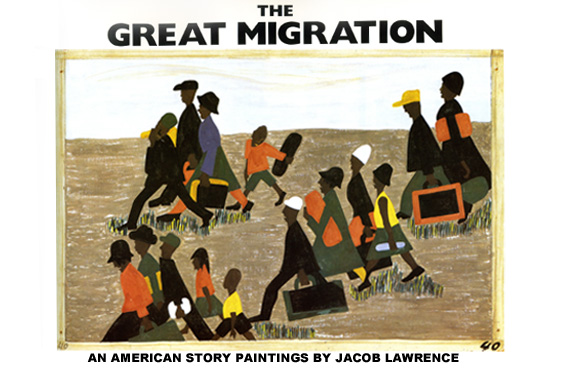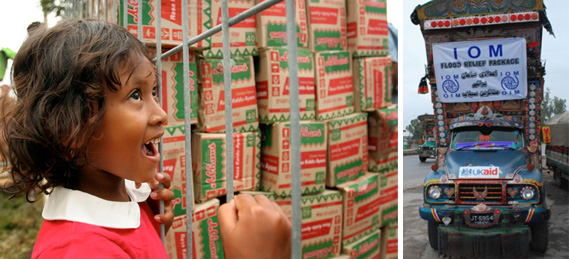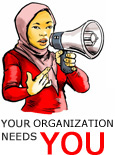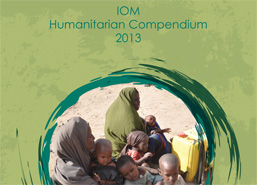

THE PHILLIP’S COLLECTION, one of the greatest, yet intimate, American art museums, holds some interesting clues about the future for America’s 11 million or so undocumented immigrants. This cozy museum is around the corner from IOM’s DC office and within walking distance of the Capital steps, where Barack Obama held his public presidential inauguration ceremony on Monday. Little commented on in his speech was an overture to a looming battle, soon to be joined over America’s immigration laws.
One of my favorite exhibits in the Philips collection is, as it happens, about migration to Chicago (among other Northern cities), where the young Obama cut his teeth as a community organizer. It’s a set of paintings by Jacob Lawrence known as the Migration series, which tells the story of the exodus of African-Americans who left their homes and farms in the Deep South of the US between 1916 and 1960, traveling to northern industrial cities like Chicago, fleeing the racism of Jim Crow laws and seeking economic opportunities for their families.
This is the community which Barack Obama, served as a young college graduate when he turned his back on the high salaries of corporate America and moved to the South Side of Chicago. From June 1985 to May 1988, he worked as a community organizer, helping Chicago residents, churches, and local government improve their atrocious housing conditions, set up job training programs for the unemployed and after-school programs for youth.



Do you know how to spend IOM money wisely?
If you familiarize yourself with “best procurement practices” not only will your mission (and thereby the donor) get best value for the money spent on various projects, but you may even contribute to an increased number of projects that will come up as a result of your good procurement practices.
Here’s the thing: You may not realize this but the money we are spending for project implementation is subject to IOM procurement regulations compliance and subject to audit. So it’s really important that you get your head around a few simple rules. This will save all of us considerable time and trouble.
Tip One: The most important advice I can give is that you should plan your requirements well and carefully coordinate your project’s needs with the procurement staff.
FPU is here to support your mission and your daily procurement requirements especially in terms of technical advice for best procurement practices, assisting your mission in conducting tenders, vendor management, contract management and direct procurement support and assistance in obtaining quotations, creating Purchase Orders, etc, and at the same time to make sure that missions comply with the internal procurement regulations, especially for purchases above USD 75,000.
 Building (not Burning) Bridges
Building (not Burning) Bridges
THERE’S a school of thought in IOM that the media are a menace, best avoided. We often cling to the mantra that we do our work on behalf of donors and that is where our responsibility lies when it comes to communicating. Err... no, actually the media are the donors bosses. See they represent the taxpayers who help pay our salaries and fund our projects through the decisions of elected governments. So while some may prefer to give media the cold shoulder, it’s a shortsighted strategy and does no favors to IOM.
 Far better that you get over your anxieties, learn how to work with the media in a spirit of friendly cooperation and trust and thereby enhance IOM’s reputation. This is not to advocate a naïve approach in which you spill the beans with your buddies at the nearest drinking hole. That would be a recipe for disaster both for the organization and yourself and probably get you a ticket home from wherever you are working. The task of dealing with the written and electronic press is typically left to IOM’s media focal points,
Far better that you get over your anxieties, learn how to work with the media in a spirit of friendly cooperation and trust and thereby enhance IOM’s reputation. This is not to advocate a naïve approach in which you spill the beans with your buddies at the nearest drinking hole. That would be a recipe for disaster both for the organization and yourself and probably get you a ticket home from wherever you are working. The task of dealing with the written and electronic press is typically left to IOM’s media focal points,
but in the era of 24/7 social media that is not always realistic.
Besides it’s a priority issue for IOM to promote our programs and policies and to inform the press, the general public and other stakeholders about one of the biggest, most multi-faceted issues of our time - migration.
As the organization’s official spokesperson Jean-Philippe Chauzy puts it in the following extract from: Building Bridges with the Media: A Tool Kit for Media Focal Points: “IOM and migration issues are now more visible in the media than ever before. Consequently we need to start thinking like journalists - looking for and taking into account potential media angles and stories in every IOM activity.”
IOM Humanitarian Compendium 2013: Funds are needed to complete various emergency projects in 16 countries including Afghanistan, Chad, the Democratic Republic of the Congo, Haiti, Kenya, Mali, Pakistan, the Philippines, Somalia, South Sudan, Syria and Yemen.
Issue 11:
January 15, 2013
Country Specific
Migration Maps
 Do you have a story about IOM’s work in the field? Is there an unsung hero who's work we can showcase? Send a short piece, photos or a video and we will publish. The best entry will win an award. ocu@iom.int
Do you have a story about IOM’s work in the field? Is there an unsung hero who's work we can showcase? Send a short piece, photos or a video and we will publish. The best entry will win an award. ocu@iom.int



